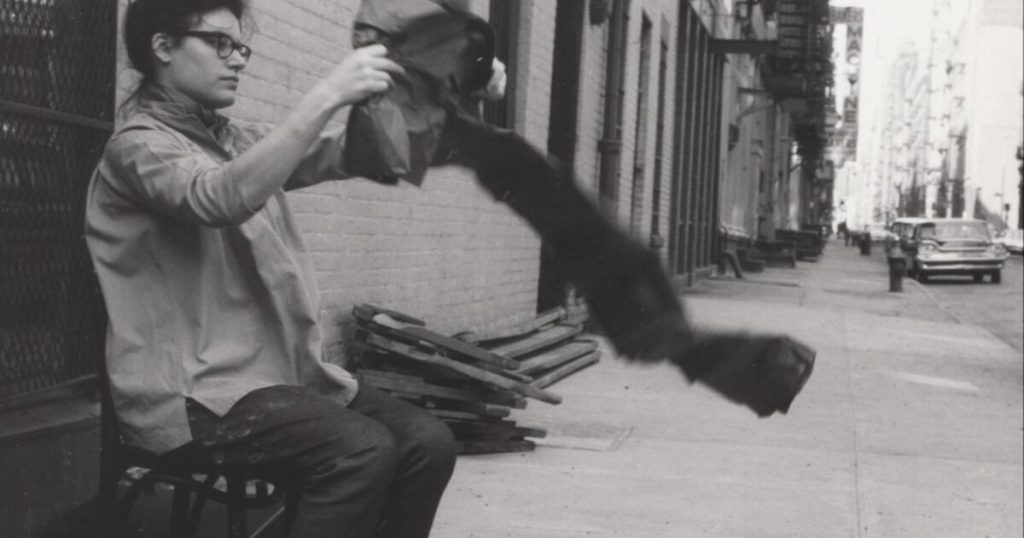Alison Knowles, a key member of the Fluxus movement, died at 92 in New York on October 29th. Her death was confirmed by her representing gallery James Fuentes.
Knowles is known for her participatory performances and sound-based works that merged art with daily life. Her work often transformed ordinary actions—making a salad or folding laundry—into poetic, collective experiences, inviting audience involvement and chance.
Born in Scarsdale, New York, in 1933, Knowles studied briefly at Middlebury College before earning a fine arts degree from Pratt Institute in 1956. Around that time, she joined the New York Mycological Society, founded by experimental composer John Cage. She later took part in the first Fluxus event in 1962 in Düsseldorf, Germany. This assembly included George Maciunas, Nam June Paik, Dieter Roth, Emmett Williams, Benjamin Patterson, Wolf Vostell, and Knowles’s then-husband Dick Higgins.
That same year, Knowles created her most famous artwork: Make a Salad (1962). This is what the Fluxus movement called an “event score,” a text-based instruction manual coined by George Brecht that allows the audience to participate in an action. This score, however, omitted all of the instructions and ingredients, instead simply insisting the reader “make a salad.” She first performed it in 1962 at the Institute of Contemporary Arts in London.
Throughout the 1960s and ’70s, Knowles helped to develop some of the Fluxus movement’s most important works. For example, Knowles worked with Cage on Notations, a large collection of graphic scores and text by 269 composers. Her own works include Shoes of Your Choice (1963), where an audience member describes one of their shoes to the crowd, and Newspaper Music (1962–63), where people read out various sections of a newspaper together.
Knowles continued performing throughout her life. Her most recent solo exhibitions were staged by the Carnegie Museum of Art in 2016 and the Berkeley Art Museum & Pacific Film Archive in 2022, a retrospective that traveled to the Museum Wiesbaden, Germany in 2024. The House of Dust (1967), a computer-generated work, will be presented at the inaugural exhibition in the renovated New Museum.
“Performance art now allows for so much human activity that was never available when I started out on a concert stage,” she told the New York Times in 2022. “The concept of performance now includes food, children, the weather, you name it, everything—I like that.”
